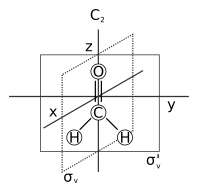
Photo from wikipedia
Endometrial carcinoma is the most common cancer of the female genital tract. This review article discusses the usefulness of molecular techniques to classify endometrial carcinoma. Any proposal for molecular classification… Click to show full abstract
Endometrial carcinoma is the most common cancer of the female genital tract. This review article discusses the usefulness of molecular techniques to classify endometrial carcinoma. Any proposal for molecular classification of neoplasms should integrate morphological features of the tumors. For that reason, we start with the current histological classification of endometrial carcinoma, by discussing the correlation between genotype and phenotype, and the most significant recent improvements. Then, we comment on some of the possible flaws of this classification, by discussing also the value of molecular pathology in improving them, including interobserver variation in pathologic interpretation of high grade tumors. Third, we discuss the importance of applying TCGA molecular approach to clinical practice. We also comment on the impact of intratumor heterogeneity in classification, and finally, we will discuss briefly, the usefulness of TCGA classification in tailoring immunotherapy in endometrial cancer patients. We suggest combining pathologic classification and the surrogate TCGA molecular classification for high-grade endometrial carcinomas, as an option to improve assessment of prognosis.
Journal Title: Gynecologic oncology
Year Published: 2017
Link to full text (if available)
Share on Social Media: Sign Up to like & get
recommendations!